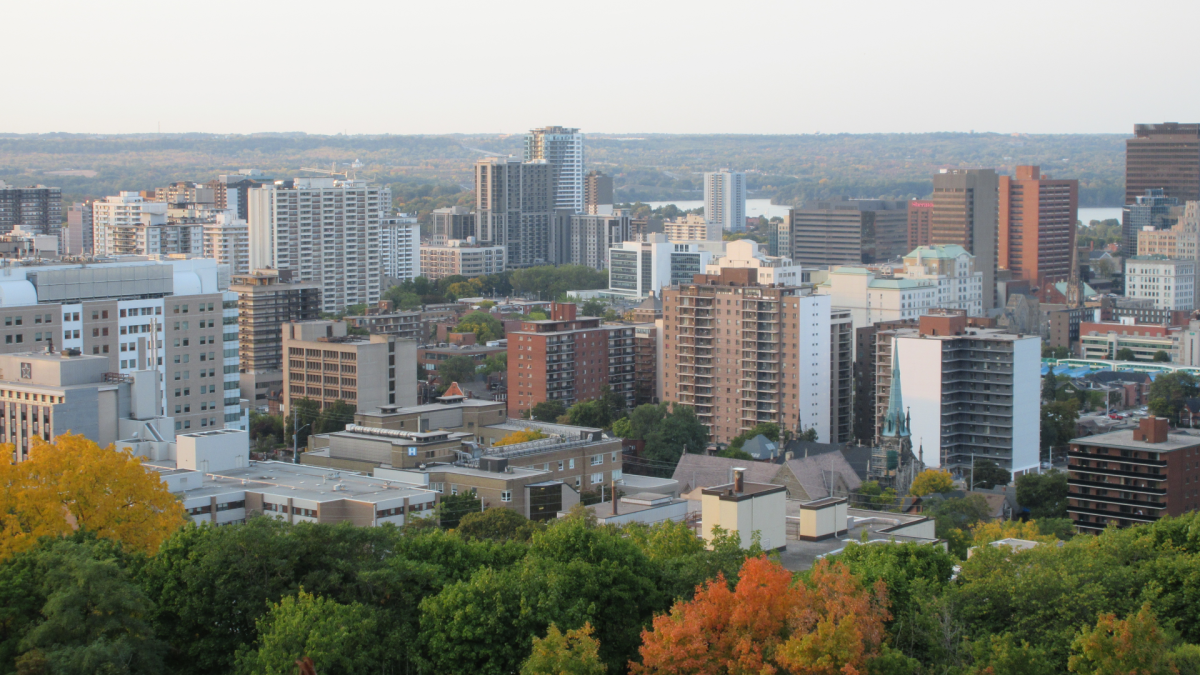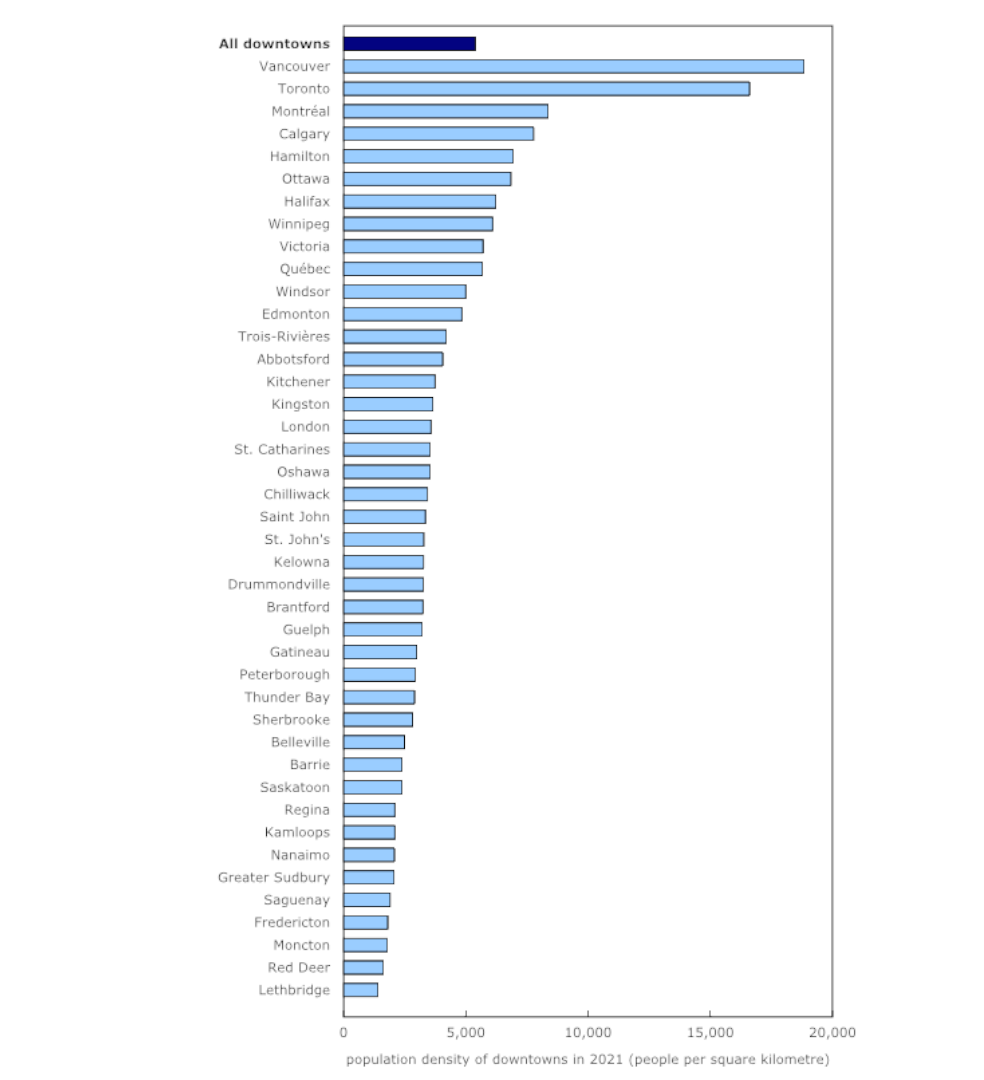A specialist who tracks migration says housing prices, immigration and the COVID-19 pandemic are what have put Hamilton’s downtown among the densest in Canada.

Bruce Newbold, professor of geography and director at the School of Earth, Environment and Society at McMaster University, says the finding from the latest 2021 Statistics Canada (StatCan) census data is a “bit” of a surprise.
“We often think that people are going to live in more suburban places, edge of the city, where housing prices are a little bit less expensive,” Newbold told 900 CHML’s Good Morning Hamilton.
“So it is really interesting to see that downtown growth, but I think it also reflects the increasing livability and desirability for being downtown.”
The StatCan data revealed the downtown has 6,939 residents per square kilometre, which places it between Calgary (7,778) and Ottawa (6,847). Vancouver was tops in Canada with a density of 18,837 residents per square kilometre.
The city’s downtown core is now home to just over 53,000 residents – up nine per cent from the 48,500 recorded in the last census.

Get daily National news
Close to 248,000 live within a 10-minute drive to the area and about 420,000 within 20 minutes.
Since the last census in 2016, Hamilton proper has grown in population by just over 32,000 – about six per cent from 536,917 to 569,353.
Hamilton’s metropolitan area (CMA), which includes Burlington and Grimsby, grew five per cent between 2016 and 2021, moving to 785,184 from 747,545.
Newbold suggests a potential attraction to downtown and Central Hamilton is likely the average cost of a house, which the Realtors Association of Hamilton-Burlington (RAHB) estimates to be around $678,000 as of the end of January.
Last month, the average price for the Hamilton CMA topped $1 million – a record-high.
Over the last four years, the Greater Toronto and Hamilton Area’s (GTHA) population has grown by about 330,000, with Toronto accounting for about 20 per cent of that number.
However, last week Toronto’s city staff reported that its share of the growth is down by about 40 per cent compared with the previous four-year period (2011-2016), when the city accounted for 30.6 per cent.
Meanwhile, Halton, Durham Region, Hamilton, York Region and Peel saw their growth rates expand between five and 8.8 per cent between 2016 and 2021.
Since 2016, just over 8,000 people have moved to Hamilton from other areas of Ontario, according to intraprovincial migration stats, with about 3,400 coming amid the pandemic.
The number of people leaving has been steadily dropping since the last census, with only about 300 people leaving the city in 2021 – about half the 625 that left in 2016.
Newbold believes much of that is likely due to migrants departing big cities due to affordability and more immigrants opting to settle in surrounding regions other than Toronto.
“There’s a lot of settlement organizations here…. The Hamilton Immigrant Partnership Council does a great job in terms of trying to co-ordinate some of those activities,” said Newbold.
“Also the connections into Toronto and sort of the broader GTA that make just being here in Hamilton much easier to get to other locations in the area.”
Hamilton’s growth and how to deal with it amid rising housing costs has been the centre of much debate over the past year since the Ford government projected 110,000 new households will hit the municipality by 2051.
City politicians voted to hold firm on that boundary in November 2021 with the prospect of accommodating through a combination of infill and intensification.
Newbold believes there will have to be a combination of intensification and boundary expansion to suit needs, as will more planning for infrastructure.
“We really do need to be thinking about planning and the infrastructure for that,” Newbold said.
“So transportation, but also recreation facilities, other community aspects and hubs, community centres we need to be planning for and making sure that we provide those services for our new populations.”









Comments